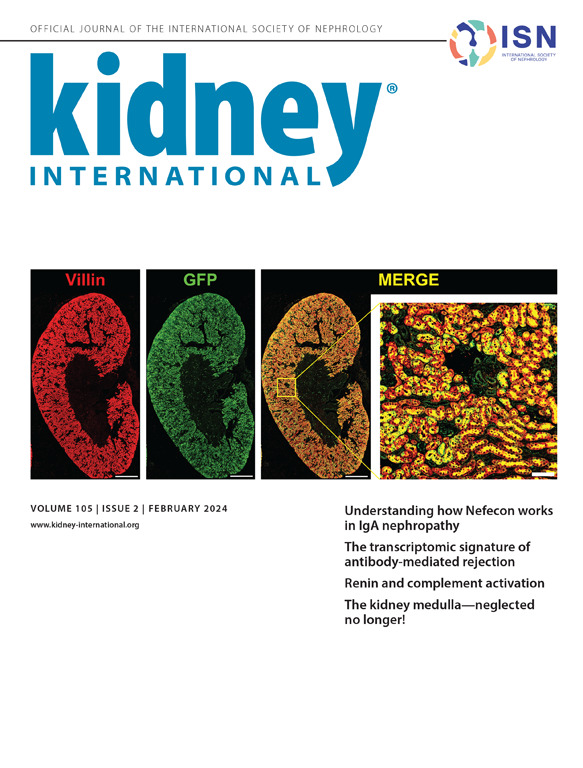Unlocking the full potential of human pluripotent stem cell derived kidney organoids through bioengineering.
IF 14.8
1区 医学
Q1 UROLOGY & NEPHROLOGY
引用次数: 0
Abstract
Human pluripotent stem cells hold inherent properties allowing to recapitulate key morphogenetic processes. These characteristics, coupled with bioengineering techniques, have led to the definition of early procedures to derive organ-like cell cultures, the so-called organoids. With regards to kidney organoids, challenges stand ahead such as the need to enhance cellular composition, maturation and function to that found in the native organ. To this end, the kidney organoid field has begun to nourish from innovative engineering approaches aiming to gain control on the externally imposed biochemical and biophysical cues. In this review, we first introduce how previous research in kidney development and human pluripotent stem cells have informed the establishment of current kidney organoid procedures. We then discuss recent engineering approaches to guide kidney organoid self-organization, differentiation and maturation. In addition, we present current strategies to engineer vascularization and promote in vivo-like physiological microenvironments as potential solutions to increase kidney organoid lifespan and functionality. We finally emphasize how working at the cusp of cell mechanics and computational biology will set the ground for successful translational applications of kidney organoids.通过生物工程释放人类多能干细胞衍生的肾类器官的全部潜力。
人类多能干细胞具有固有的特性,可以概括关键的形态发生过程。这些特点,再加上生物工程技术,已经定义了获得类器官细胞培养的早期程序,即所谓的类器官。关于肾类器官,挑战摆在面前,例如需要增强细胞组成,成熟和功能,以达到天然器官的水平。为此,肾类器官领域已经开始从创新的工程方法中得到滋养,旨在获得对外部施加的生化和生物物理信号的控制。在这篇综述中,我们首先介绍了肾脏发育和人类多能干细胞的先前研究如何为当前肾脏类器官手术的建立提供信息。然后,我们讨论了引导肾类器官自组织、分化和成熟的最新工程方法。此外,我们提出了目前的策略来设计血管化和促进体内生理微环境,作为增加肾脏类器官寿命和功能的潜在解决方案。我们最后强调如何在细胞力学和计算生物学的尖端工作将为肾类器官的成功转化应用奠定基础。
本文章由计算机程序翻译,如有差异,请以英文原文为准。
求助全文
约1分钟内获得全文
求助全文
来源期刊

Kidney international
医学-泌尿学与肾脏学
CiteScore
23.30
自引率
3.10%
发文量
490
审稿时长
3-6 weeks
期刊介绍:
Kidney International (KI), the official journal of the International Society of Nephrology, is led by Dr. Pierre Ronco (Paris, France) and stands as one of nephrology's most cited and esteemed publications worldwide.
KI provides exceptional benefits for both readers and authors, featuring highly cited original articles, focused reviews, cutting-edge imaging techniques, and lively discussions on controversial topics.
The journal is dedicated to kidney research, serving researchers, clinical investigators, and practicing nephrologists.
 求助内容:
求助内容: 应助结果提醒方式:
应助结果提醒方式:


